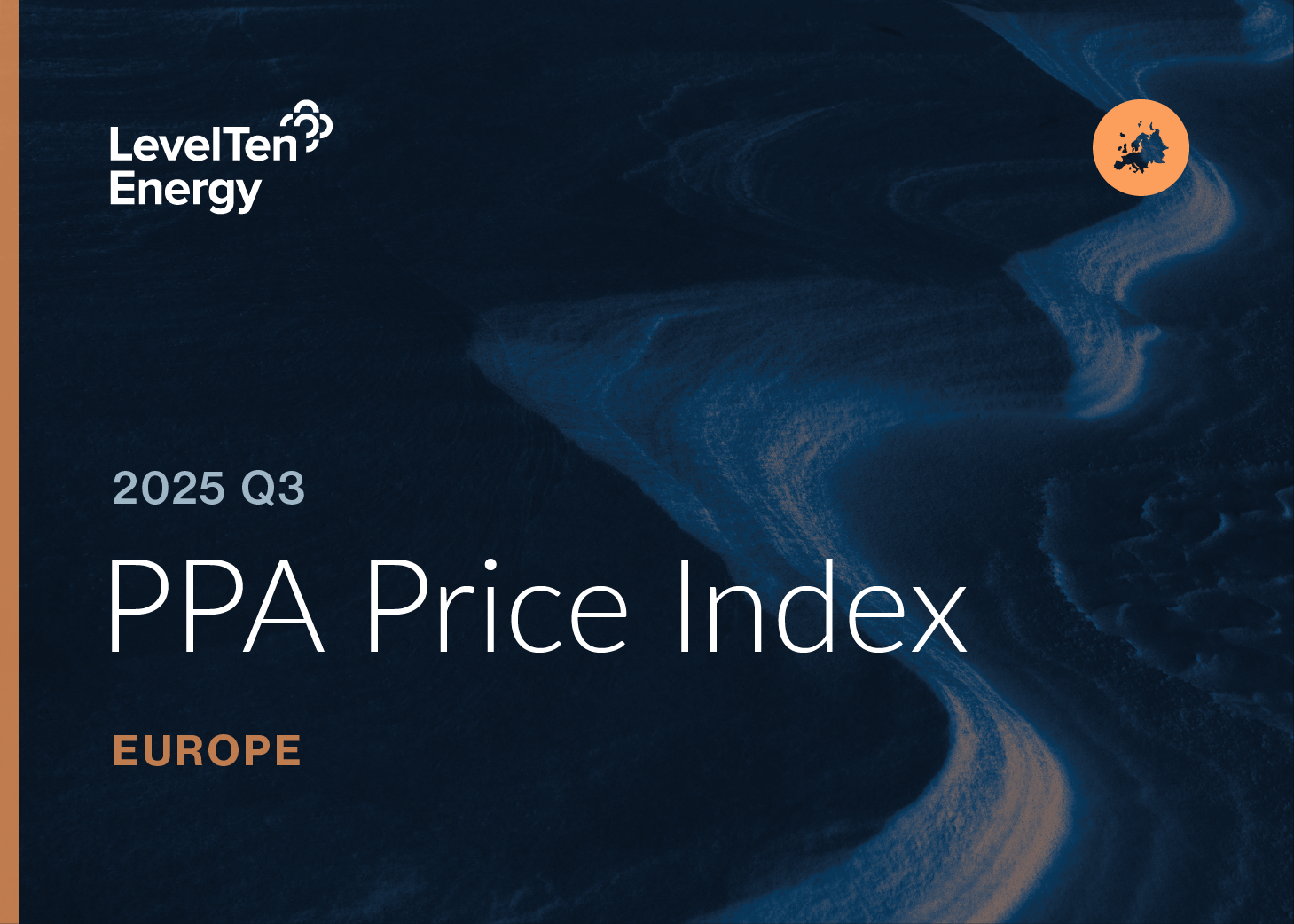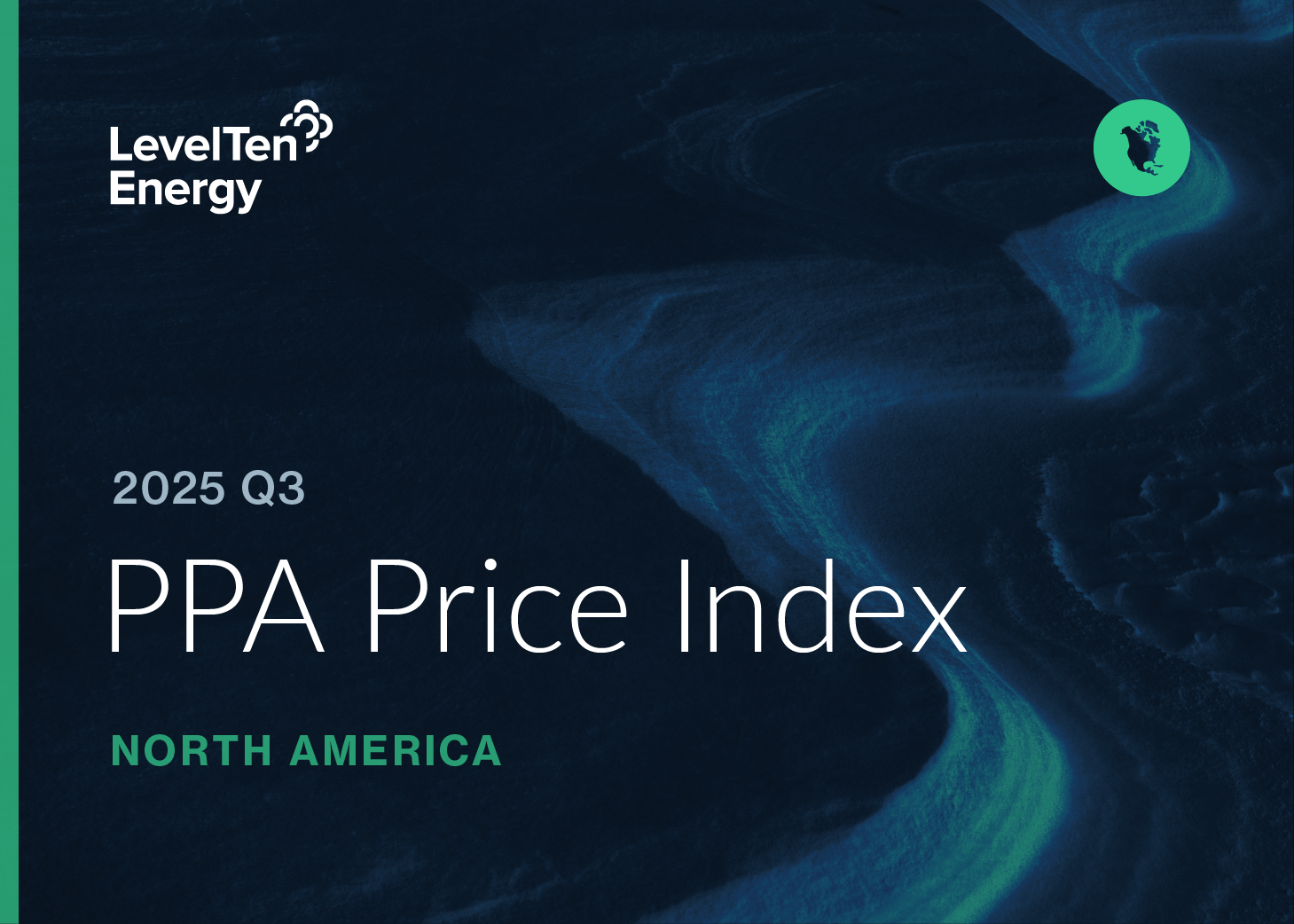Corporations are entering into power purchase agreements (PPAs) in record numbers for many reasons: To meet corporate social responsibility goals, to manage energy costs, and to meet customer and investor demands for more sustainable practices. But PPAs aren't something that can be signed once and forgotten about. They are long-term, often multi-million-dollar financial commitments, and their value depends on many factors outside of a corporation's control, like how the renewable energy project is being operated and what's happening in regional energy markets. In addition, the performance of a PPA in terms of its financial impact on the company and its environmental benefits will greatly impact how a company thinks about renewable energy procurement in the future.
Careful monitoring of how a PPA has performed to-date, and how it is expected to perform in the future, is key to ensuring that a corporation meets its goals and maintains its budgets. But until now, the process of collecting and analyzing all of the required data has been a manual and time-consuming process, prone to human error. As one of our clients described it: "it was spreadsheet hell."
To get information on renewable energy certificates (RECs) created by the agreement, sustainability teams pulled info from a REC registry; to manage monthly settlement payments, accounting teams set up invoicing systems with the developer; to determine the net present value of the investment, finance teams ran their own calculations; to track the corporation's renewable energy usage and costs, energy managers requested data from the developer on how many megawatt hours were produced and sold. Corporations that didn't have the internal teams to manage reporting often paid outside vendors to compile monthly or quarterly reports, but these were often historical-looking and gave the corporation little time to react.
Bringing PPA Monitoring to the Cloud

LevelTen's Performance Monitoring feature, announced today, provides instant access to all critical PPA data in a single online dashboard. The software pulls from direct data feeds, and is updated on a daily basis, giving managers the most up-to-date look at how a PPA is performing. The dashboard includes data that's important to multiple teams and stakeholders within an organization.
- Environmental Data: How many RECs the company has received (and is expected to receive), and the emissions impact of the project based on the Environmental Protection Agency's AVoided Emissions and geneRation Tool (AVERT). LevelTen's Performance Monitoring taps into the same API that developers use to monitor the number of megawatt hours of energy each wind turbine or solar panel is producing, which is used to calculate these metrics.
- Economic Data: Historical and expected settlement cash flow and the net present value (NPV) of the contract. LevelTen customizes the dashboard based on the price and terms of each PPA, and has direct access to regional energy market data. This means that the software can instantly calculate how much the corporation will owe - or receive - at the settlement period, as well as the current and forecasted NPV.
- Energy Production Data: The number of megawatt hours of renewable energy generated and sold by the project(s), and how many megawatt hours the project is expected to produce in the future. This data enables managers to calculate their renewable energy usage, and determine if the PPA was an effective cost hedge by comparing their energy costs to the settlement cash flow.
The data is presented in charts and graphs that can be downloaded as images, and the raw data can be exported, making it easy to put together reports. But the value of the software goes far beyond simplifying reporting.
Giving Corporations the Tools to Manage - Not Just Monitor - PPAs

In addition to providing a historical look at key performance metrics, Performance Monitoring is directly connected to the latest forward market curves, which means managers can see how a PPA is expected to perform for any given metric. This enables all internal stakeholders to take action (if needed) to reach their goals and manage their budgets.
For example, if the data indicates that the corporation will receive more RECs than originally anticipated, the sustainability team can adjust their emission targets and renewable energy usage goals accordingly. If clean energy is selling for a much higher price than expected in regional energy markets, finance teams can expect to see more revenue coming in, and plan their budgets accordingly. If the project isn't generating as much energy as expected, energy managers can adjust their usage goals or look for alternatives.
With a birds-eye view of all performance metrics, managers can easily see how the PPA is impacting the entire organization, and how one metric - like the price per megawatt hour of energy generated and sold - is affecting another, such as how much they're paying per REC. Even if a corporation is paying more than they expected in settlement payments each month, they could still be getting an excellent deal on RECs. With a comprehensive view of a PPA's performance, these insights become easy to spot.
In addition to access to the data, Performance Monitoring can include a number of services provided by LevelTen Energy advisors. Examples include invoice monitoring services for settlement payments, REC certification and retirement, and ongoing contract monitoring to ensure compliance among all parties. These services, combined with instant access to near real-time data, ensure that a corporation will never be caught off guard by a PPA's performance.
Enabling a More Strategic Approach to Renewable Energy Investments

If a corporation has more than one PPA on the books, Performance Monitoring becomes even more critical. LevelTen compiles data from all PPAs into a single dashboard, so management can see how the PPAs are performing together, as a portfolio. This holistic view prevents reactions based on a myopic view of a single PPA. For example, if wind prices fell in one market, but solar prices rose in another, the impact on the overall portfolio could be small (and indicates a good diversification strategy).
In addition to providing a holistic view of the company's investment, this data makes it possible for LevelTen Energy to run its Dynamic Matching Engine and determine which projects to pursue next to further diversify and improve the portfolio. Historically, VPPAs were approached one-at-a-time; now, they can be evaluated - and managed - in the same way as other corporate investments.
Performance Monitoring is included on our platform for any corporation that procures a PPA through LevelTen Energy. Any corporation looking to manage their existing PPAs, can purchase Performance Monitoring as a standalone service.
For more information, or to request a demo of Performance Monitoring, visit LevelTenEnergy.com.


.png)



